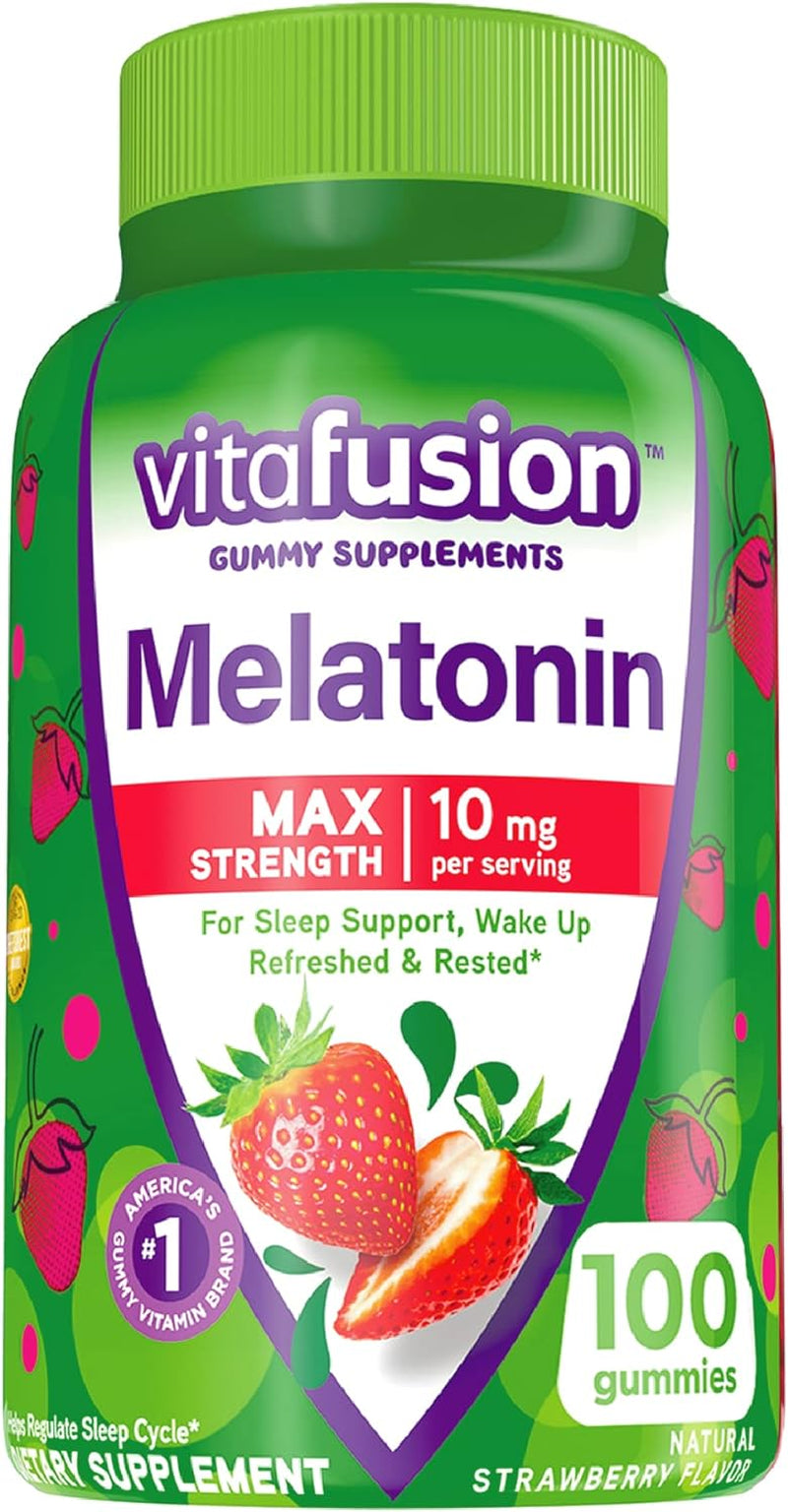
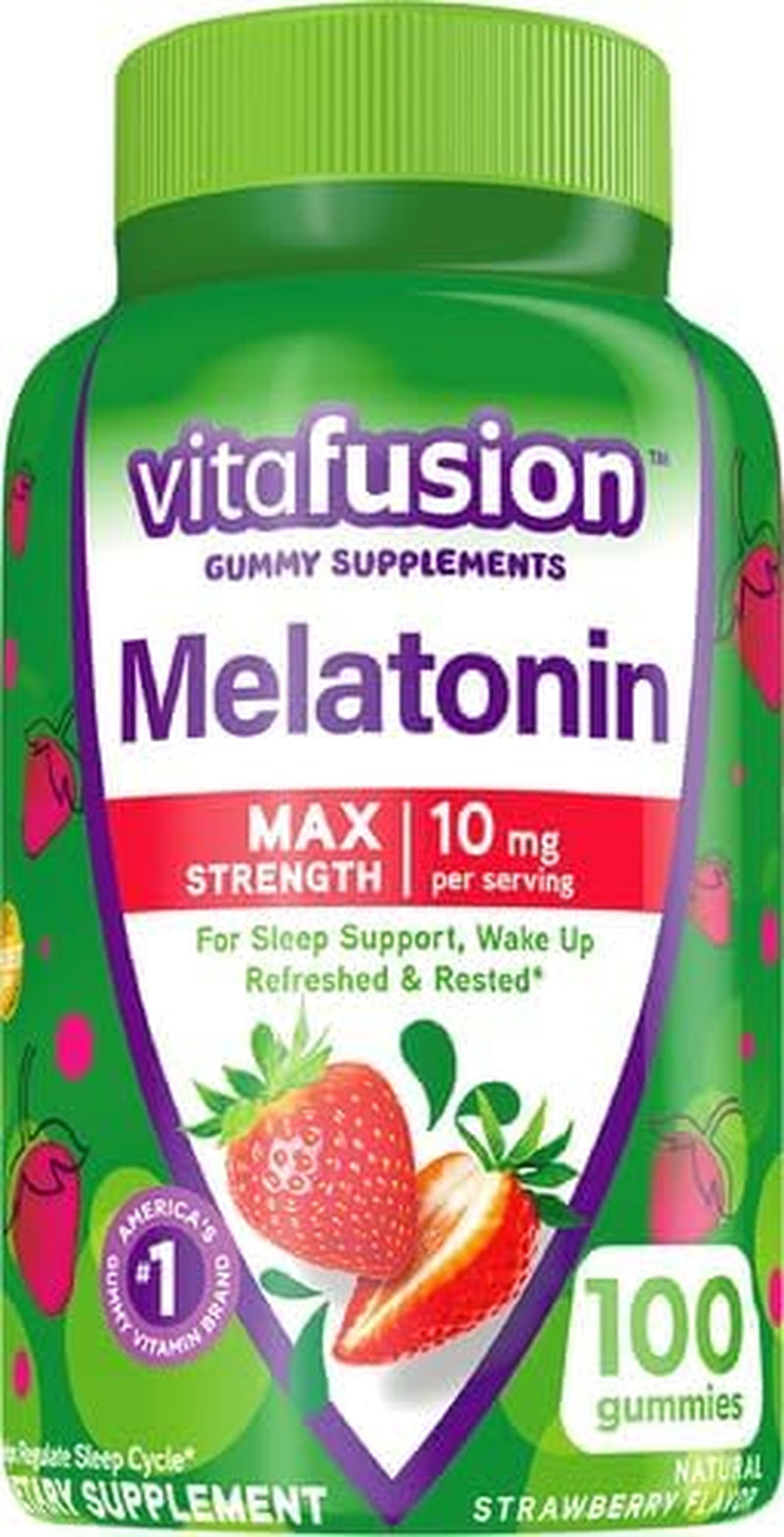
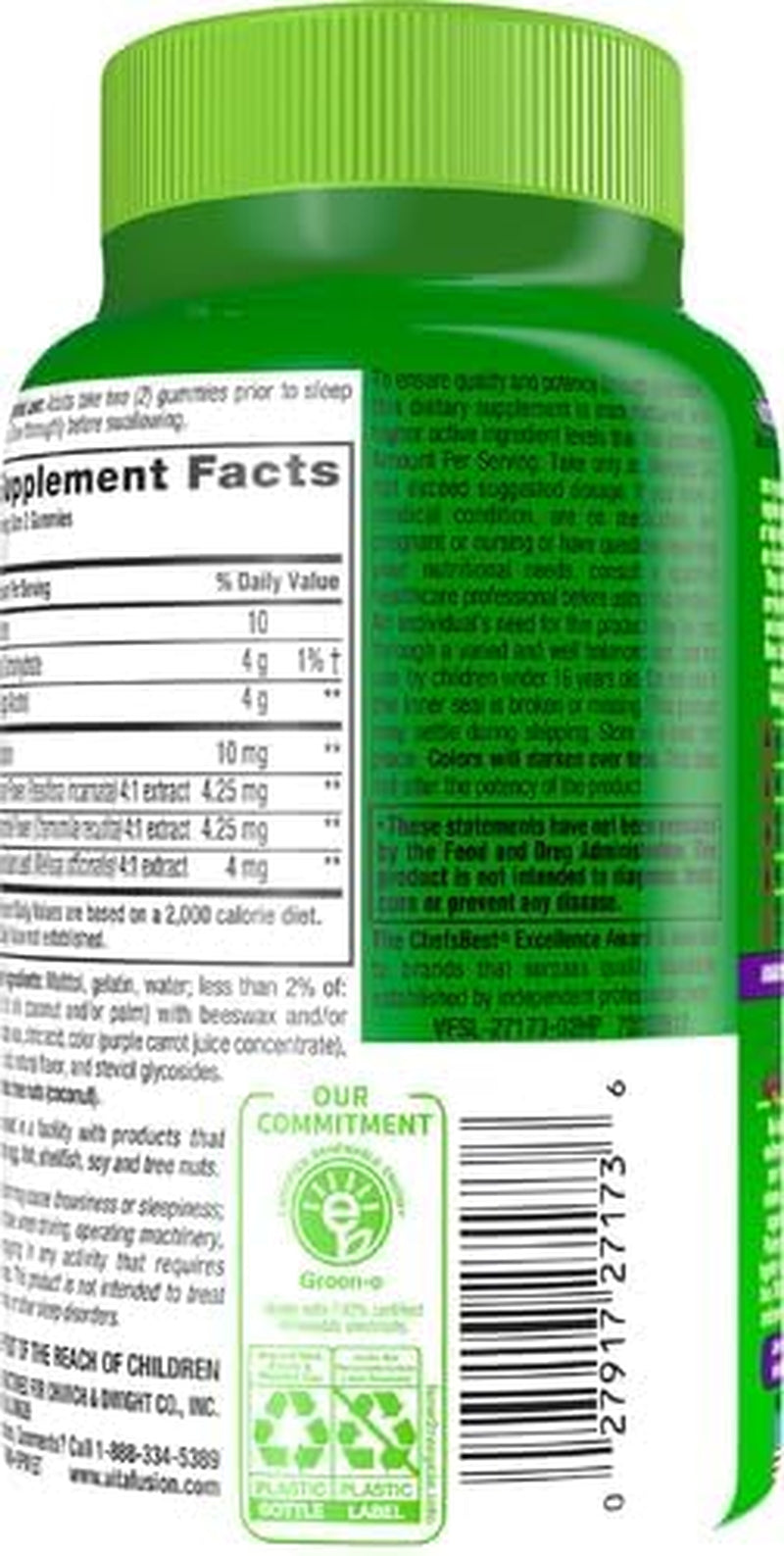
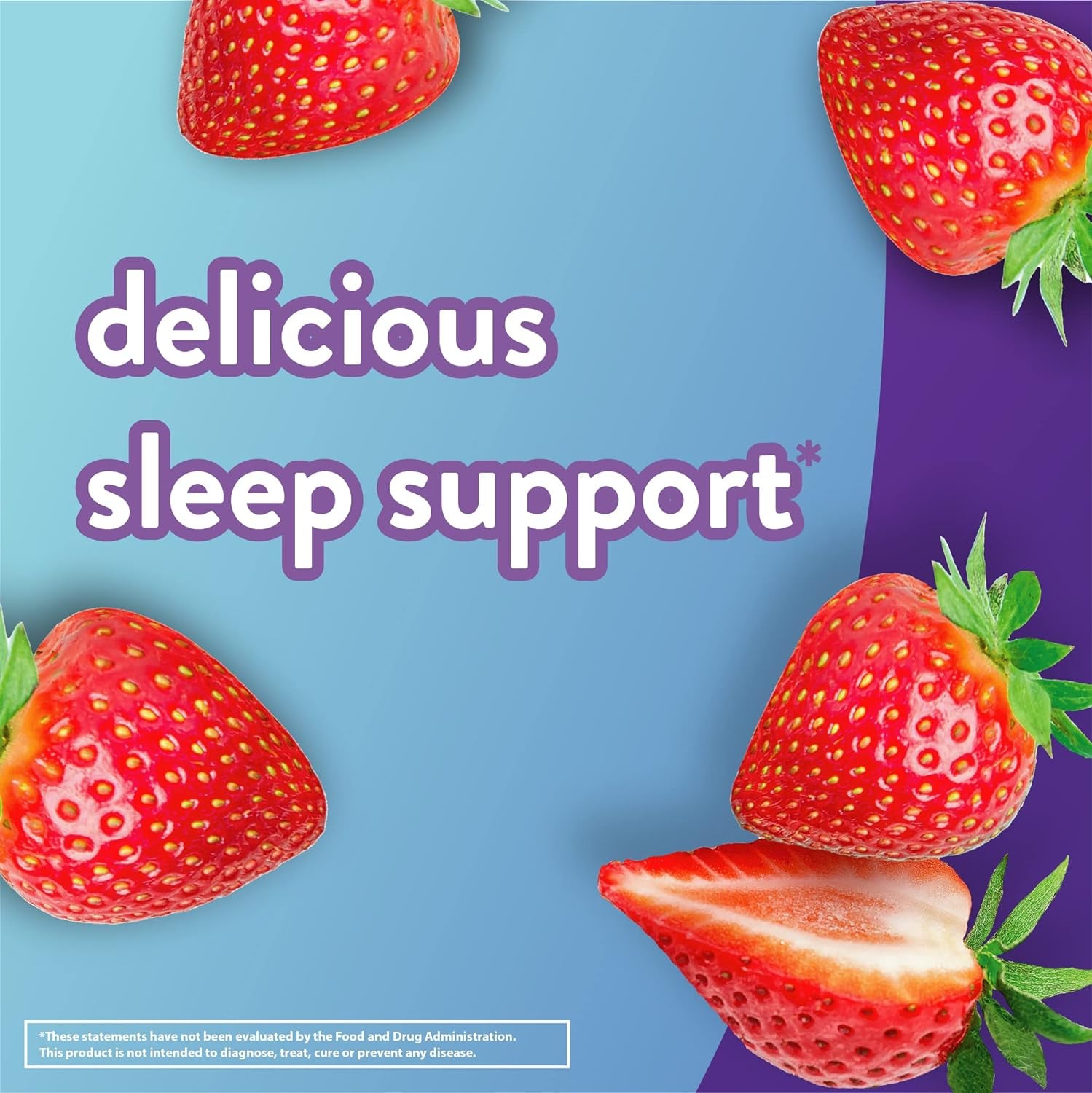
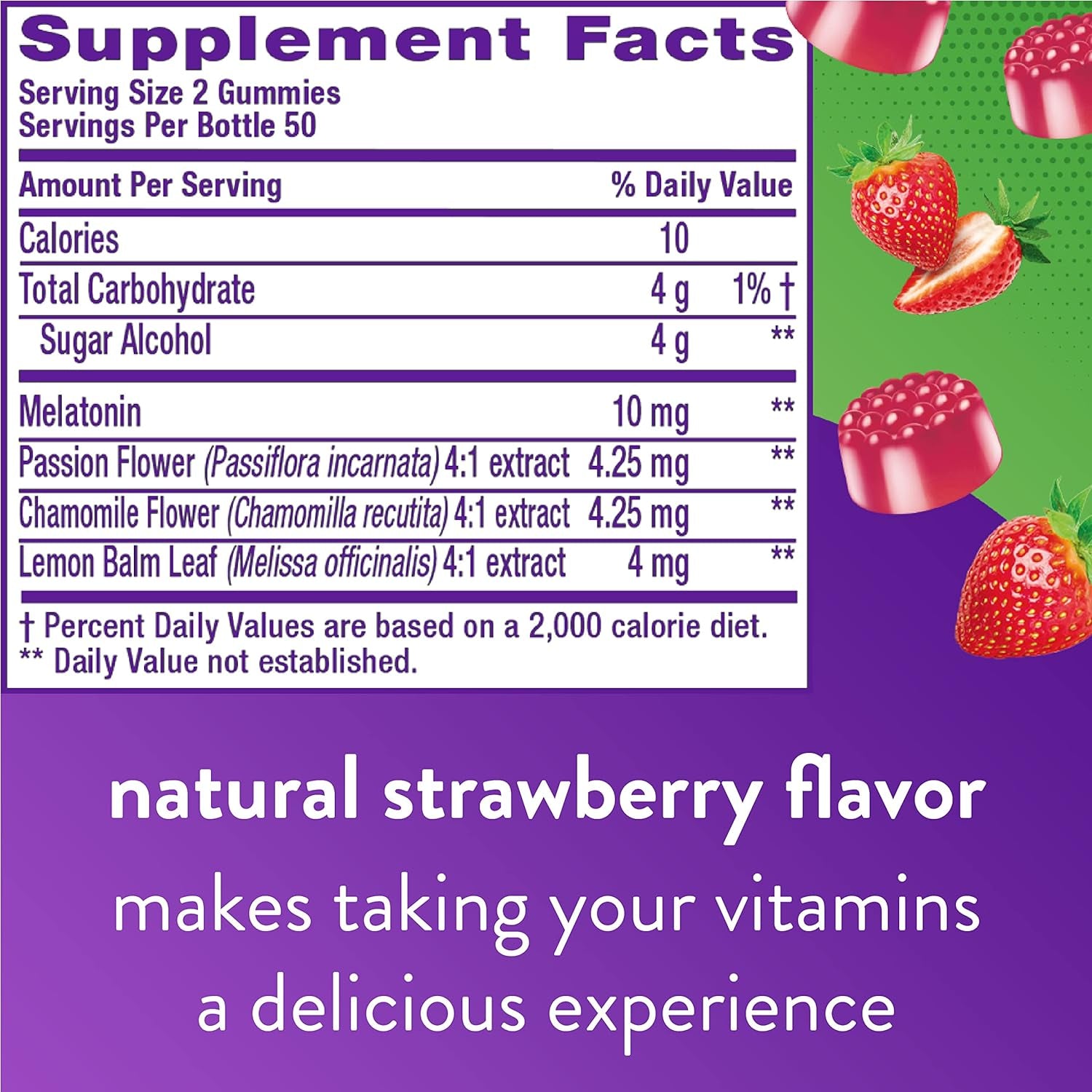

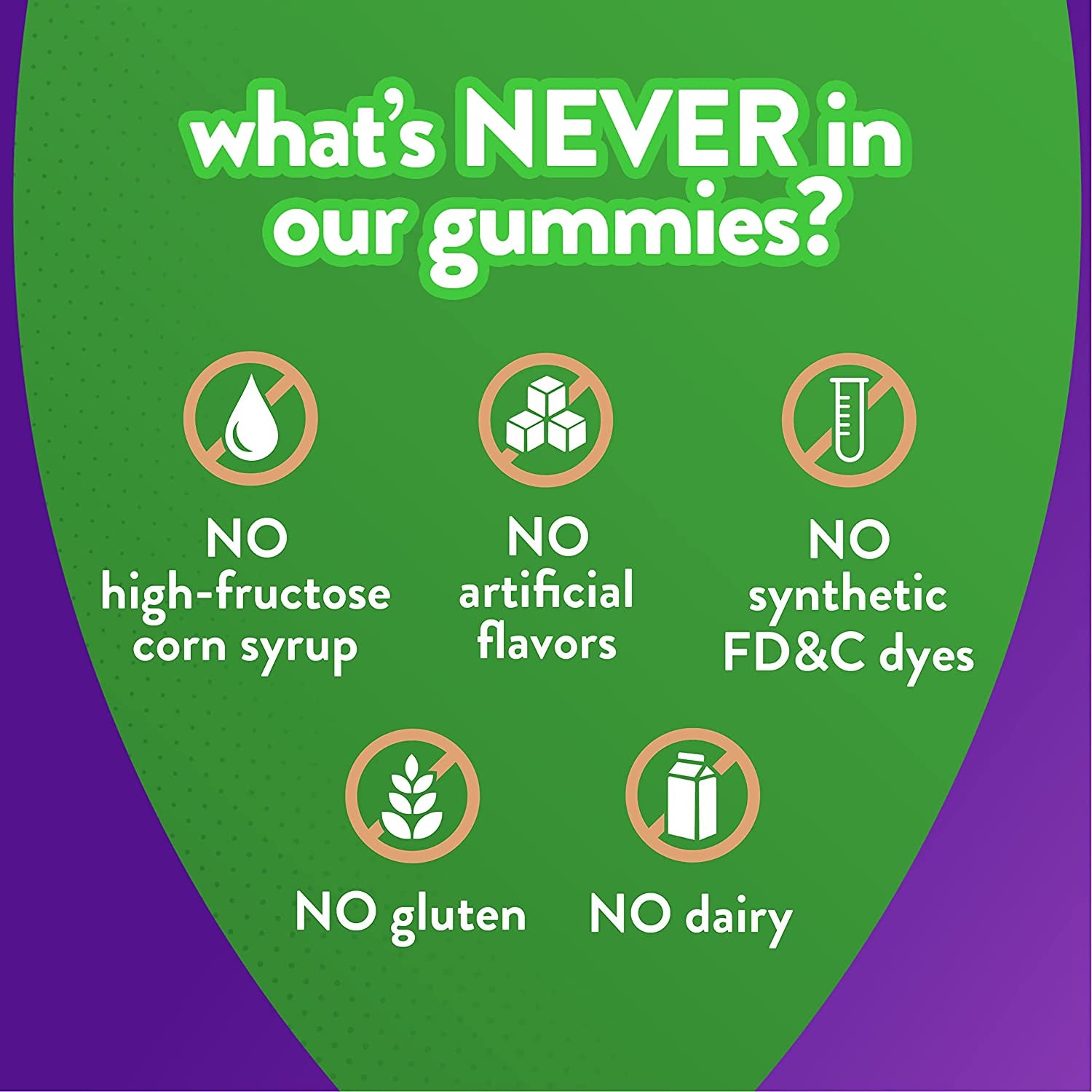
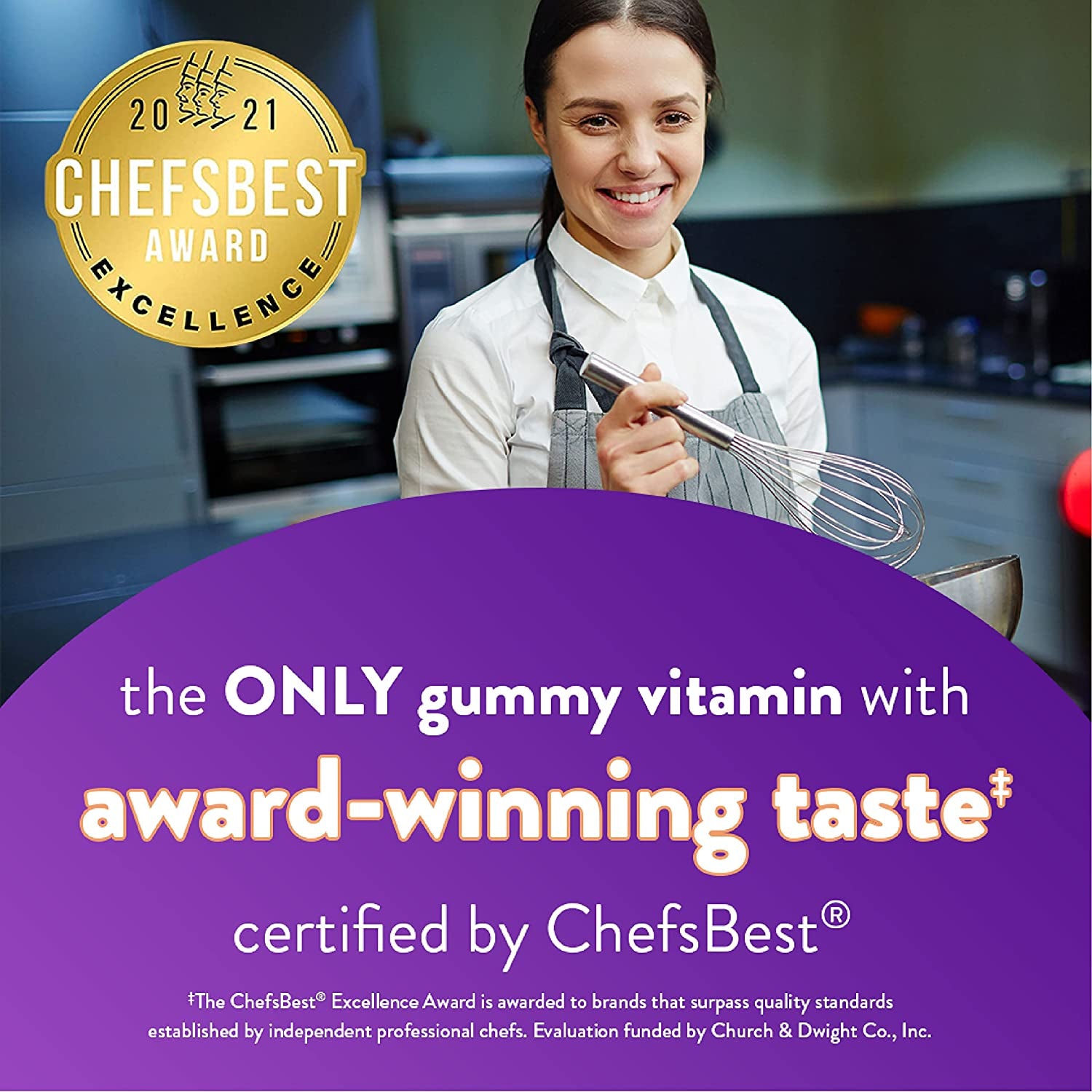
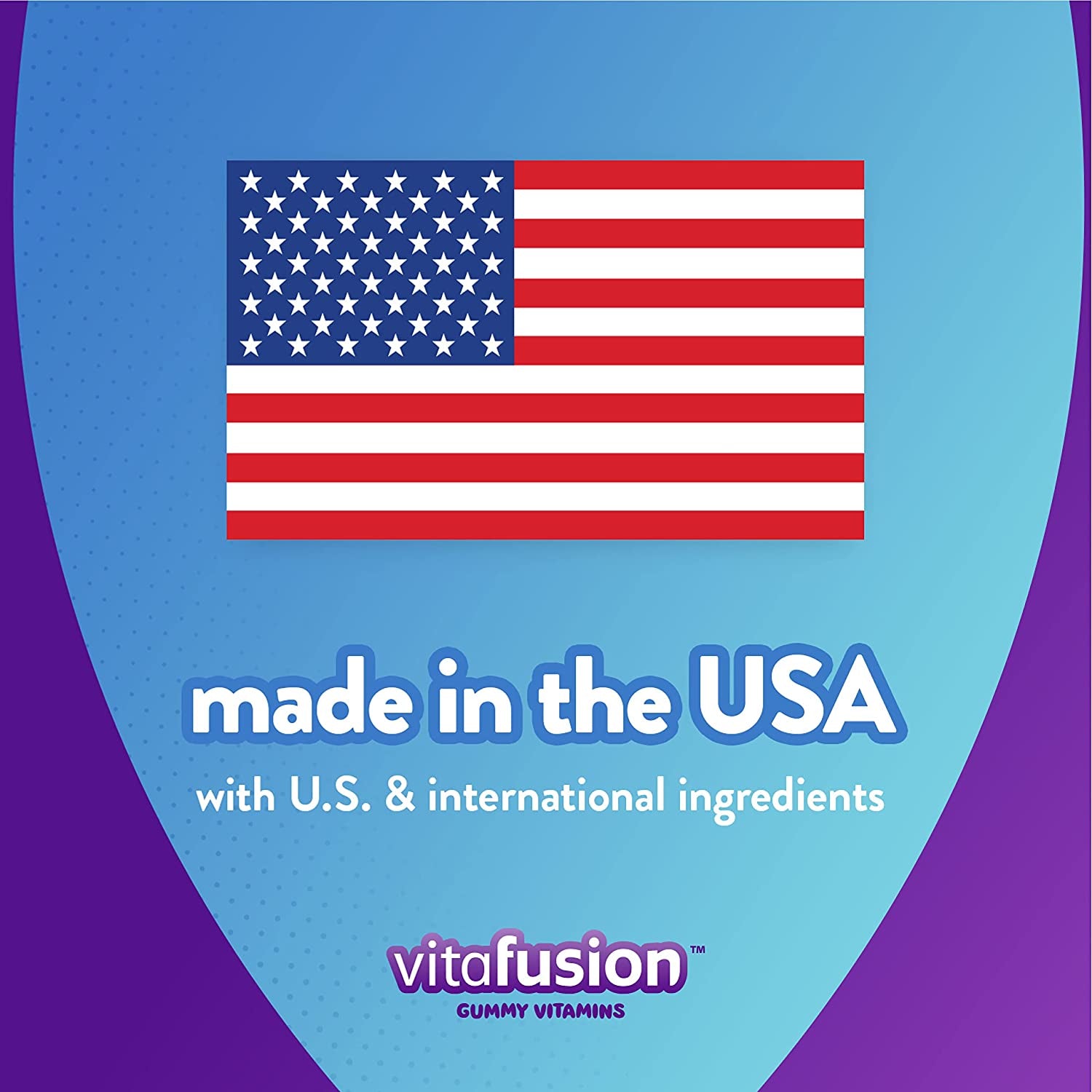
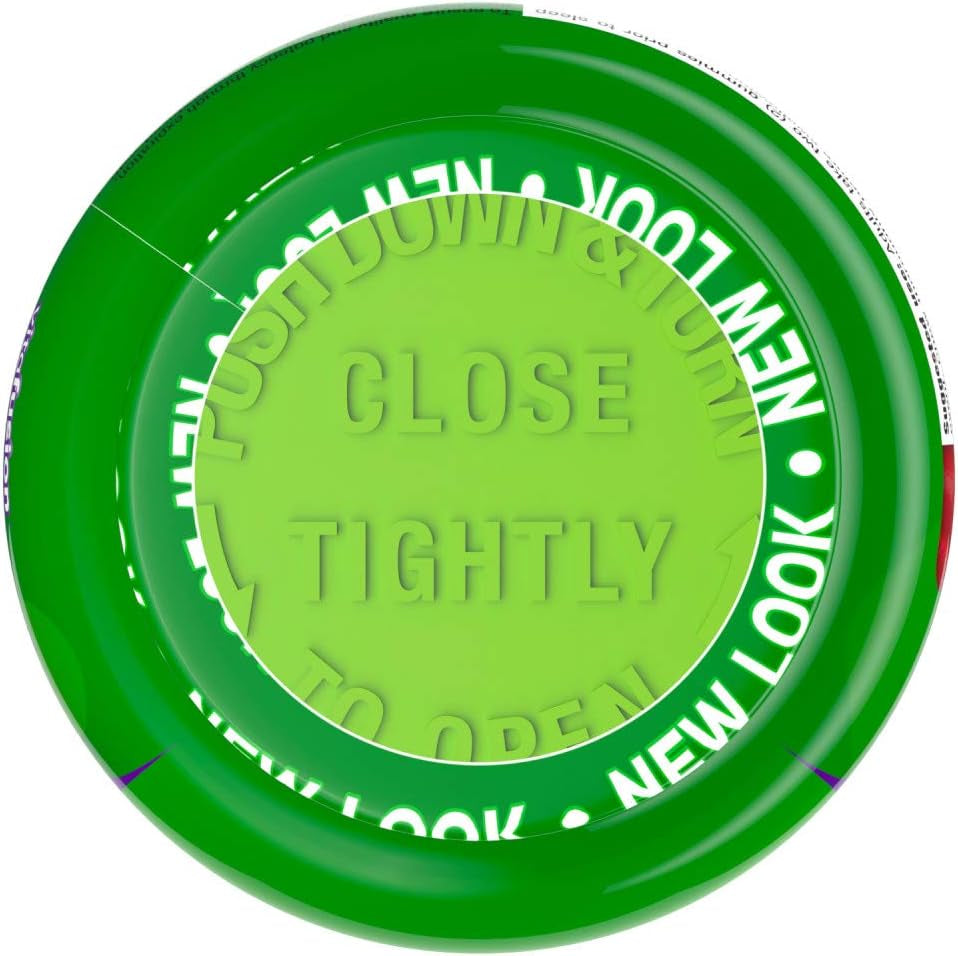
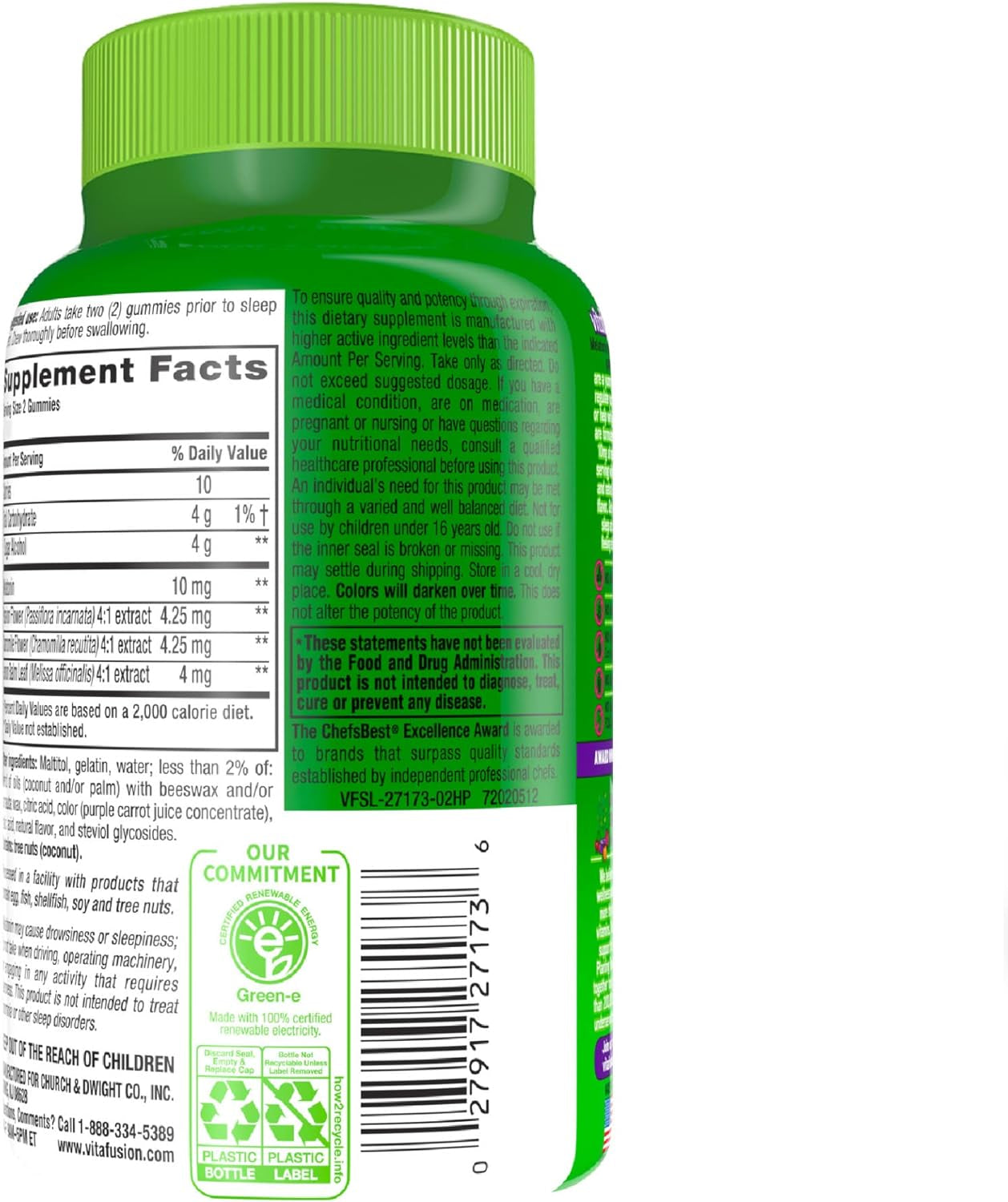
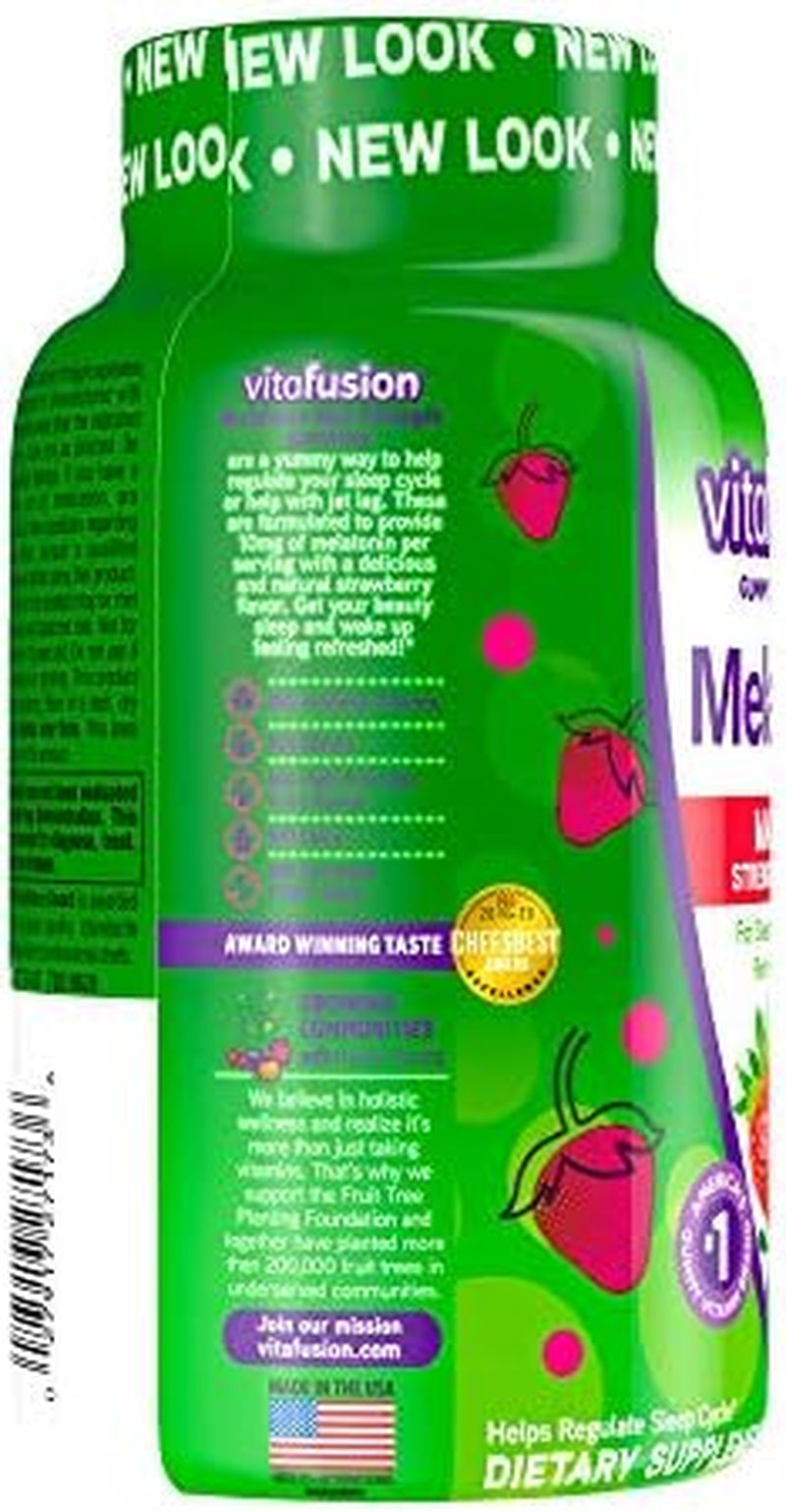
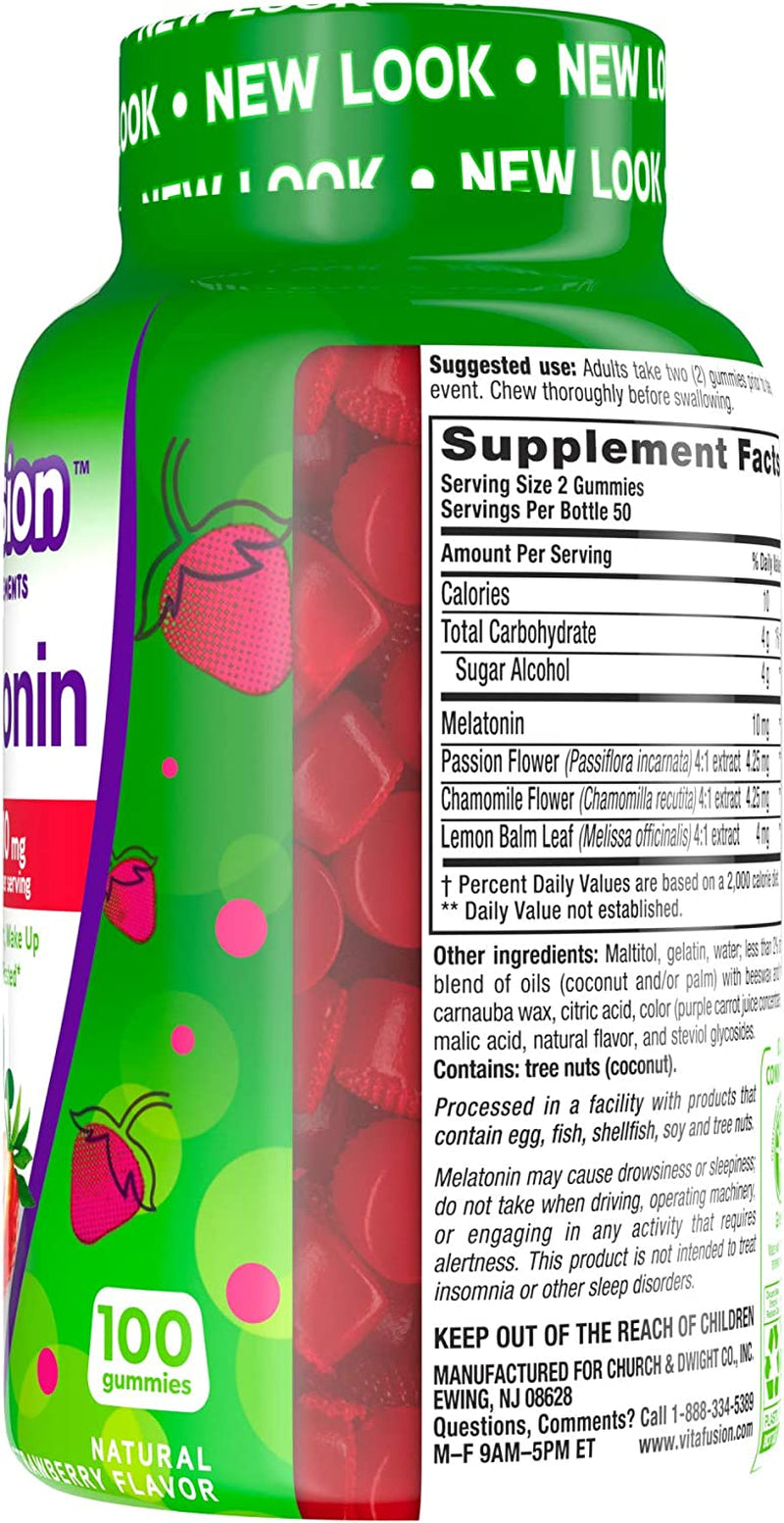
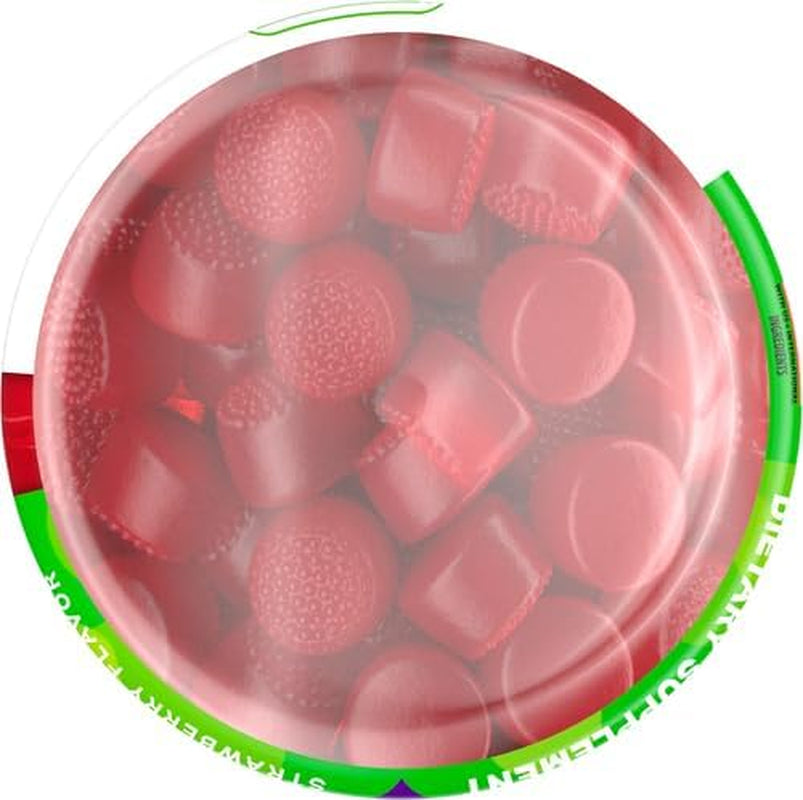
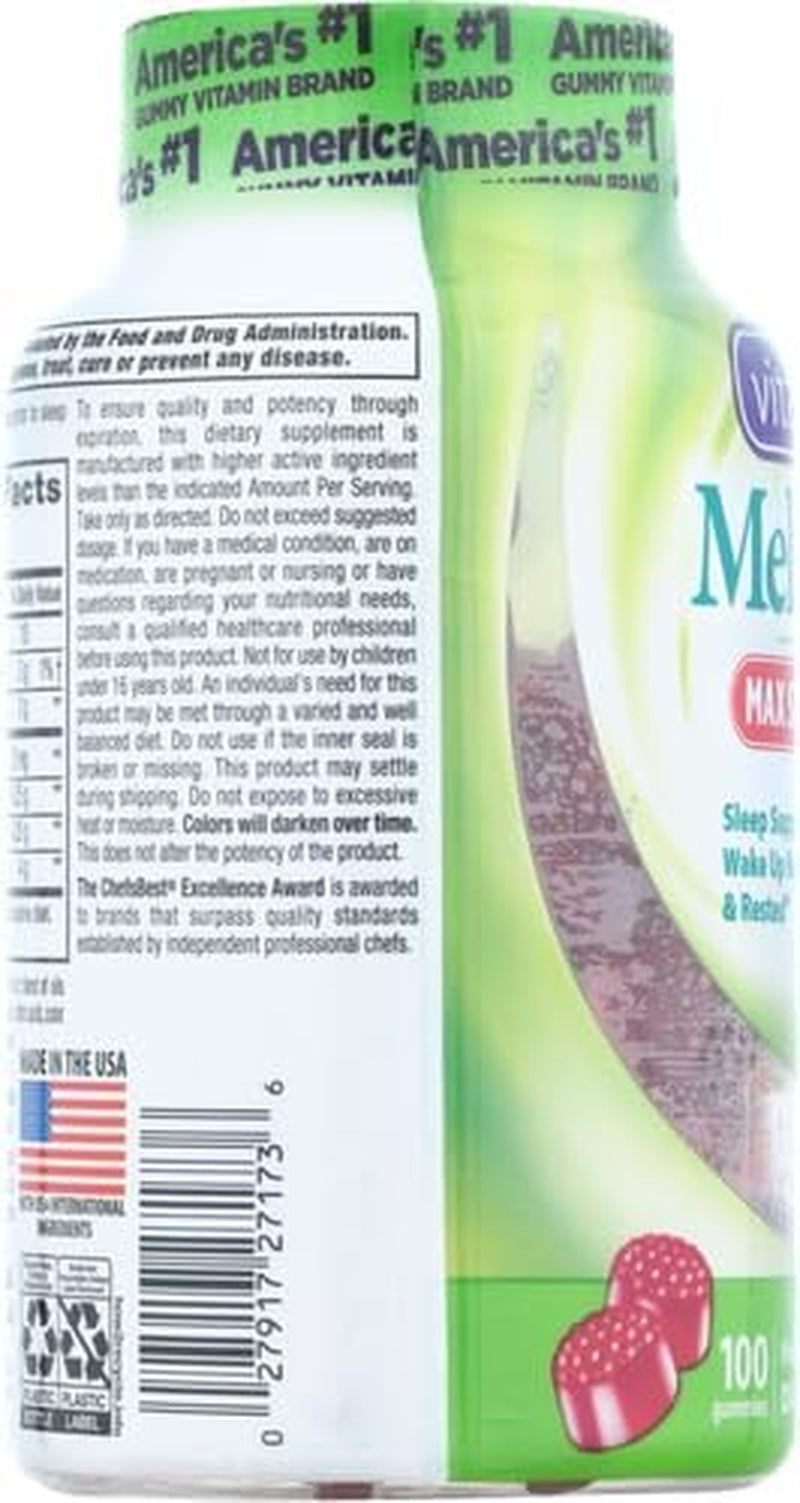
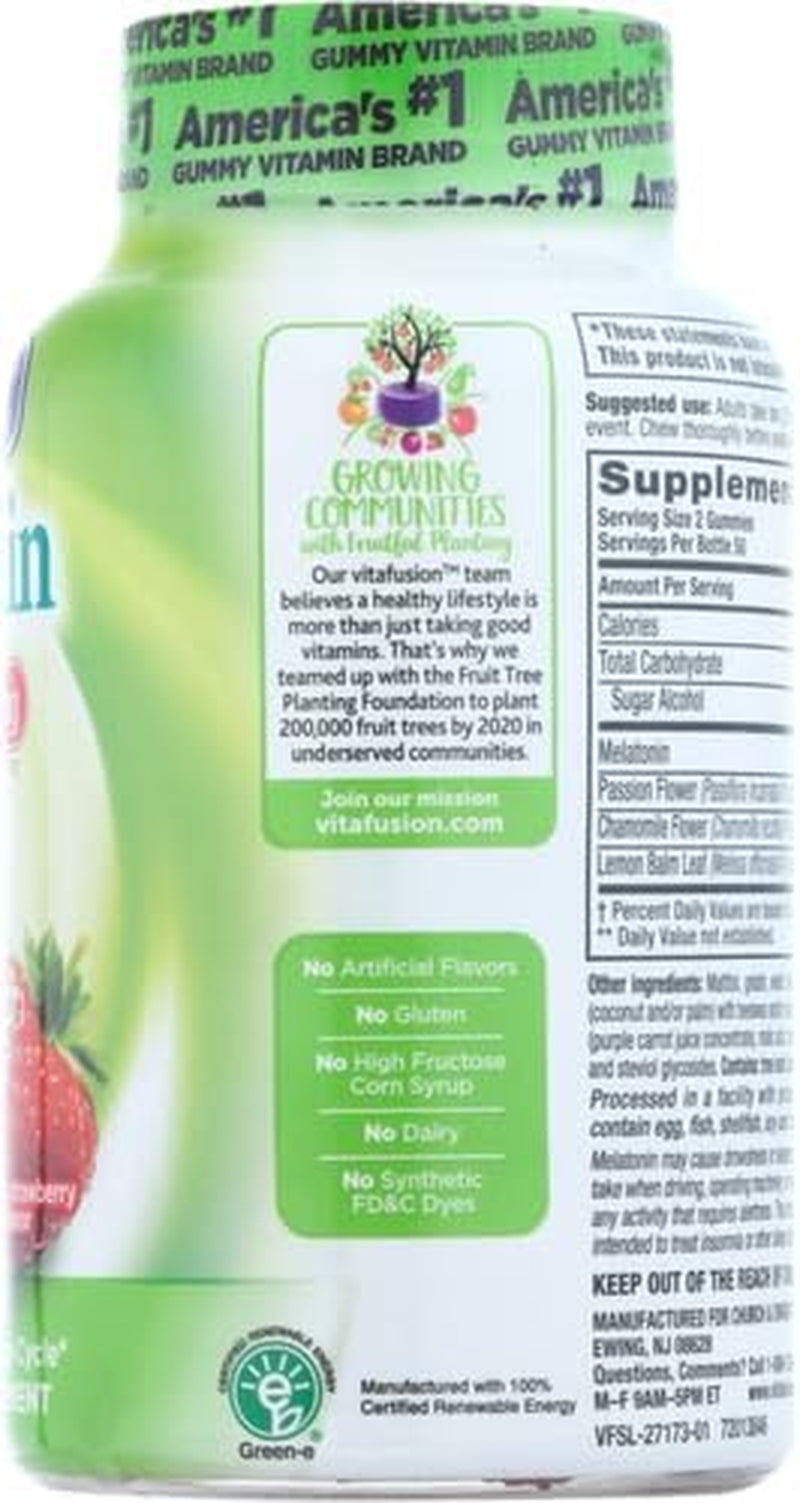
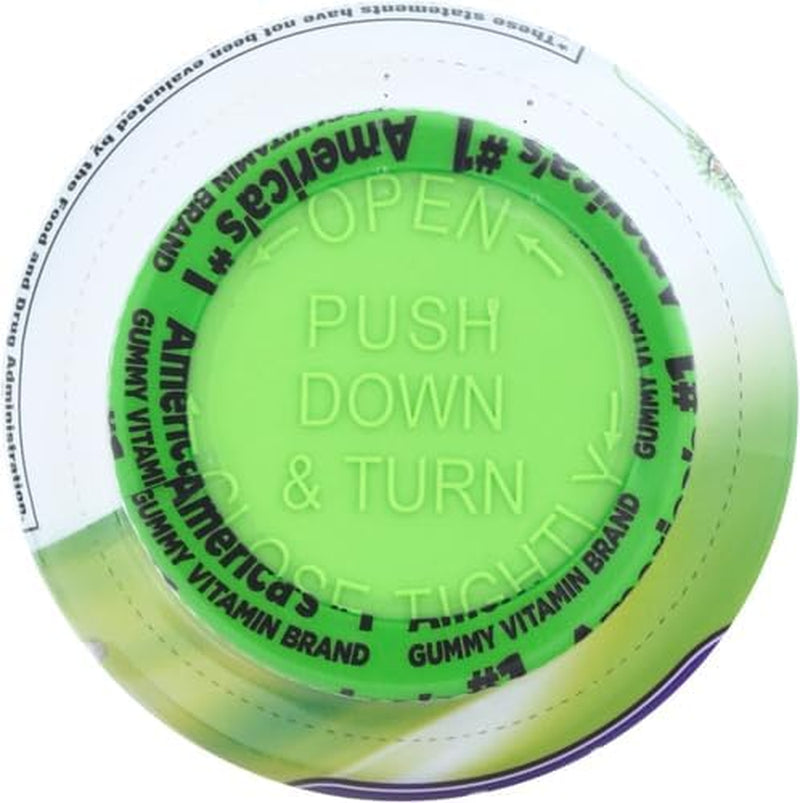
Vitafusion Max Strength Melatonin Gummies - Sleep Support, Natural Strawberry Flavor - 100 Count


Lactic Acid, L
High RiskLactic acid is an organic acid commonly used in cosmetics and skincare products as an exfoliant and pH regulator. It helps in improving skin texture and hydration by promoting the shedding of dead skin cells and enhancing moisture retention.
Sustai Insights
Lactic acid offers functional benefits as an effective exfoliant and moisturizer, contributing to improved skin appearance. However, it poses potential risks, including skin irritation and enhanced absorption, which may lead to adverse effects. Regulatory bodies have noted use restrictions due to these concerns. Overall, the ingredient is considered high risk, necessitating cautious usage, particularly for sensitive skin. Alternatives like glycolic acid may provide similar benefits with potentially lower irritation.
Cocos Nucifera (Coconut)
Medium RiskCocos Nucifera, commonly known as coconut, is derived from the coconut palm. It is widely used in various cosmetic and personal care products for its moisturizing properties, acting as an emollient and skin-conditioning agent, enhancing texture and hydration.
Sustai Insights
Cocos Nucifera offers functional benefits such as effective moisturization and conditioning for the skin, while being biodegradable and often sustainably sourced. Health risks are minimal, with low concerns for carcinogenicity, allergies, and reproductive toxicity. Environmental risks are also low, as it does not accumulate in organisms or significantly pollute. Regulatory bodies do not impose restrictions, supporting its overall low-risk status. Safe usage practices include patch testing for sensitivities, though alternatives like shea butter or jojoba oil may offer similar benefits.
Citric Acid
Medium RiskCitric acid is an alpha hydroxy acid used in personal care products primarily for its role as a pH adjuster and natural preservative. It occurs naturally in citrus fruits and is commonly utilized in various formulations for its chelating properties and mild exfoliation benefits.
Sustai Insights
Citric acid offers functional benefits as an effective preservative and pH stabilizer, contributing to product longevity and stability. It is biodegradable and derived from renewable sources. Health risks are low, with minimal concerns regarding carcinogenicity, allergies, and reproductive toxicity. However, moderate use restrictions exist due to potential irritation at high concentrations. Environmental risks are limited, as citric acid is not known to accumulate in ecosystems. Regulatory agencies have no significant advisories against its use. Overall, it is assessed as a medium-risk ingredient, with safe usage practices recommended and alternatives available.
Gelatin
Low RiskGelatin is a product obtained by the partial hydrolysis of collagen, a protein derived from animal sources, primarily from the skin and bones of pigs and cows. It is commonly used as a gelling agent, thickener, and stabilizer in various food products, pharmaceuticals, and cosmetics.
Sustai Insights
Gelatin serves as an effective gelling agent and thickener, widely utilized in food, pharmaceuticals, and cosmetics. It is generally recognized as safe, with low associated risks for carcinogenicity, allergies, and reproductive toxicity. Environmental concerns are minimal, as it is biodegradable and sourced from animal byproducts. Regulatory bodies impose few restrictions, affirming its safety for use. Overall, gelatin presents a low-risk profile, making it a reliable ingredient in various applications.
Beeswax, Yellow
Low RiskBeeswax, yellow, is a natural wax produced by honeybees, primarily composed of esters of fatty acids and long-chain alcohols. It serves as an emulsifier, thickener, and stabilizer in cosmetic formulations, contributing to texture and consistency. It is commonly used in creams, balms, and lip products.
Sustai Insights
Beeswax provides functional benefits such as enhancing product texture and acting as a natural emulsifier, while also being biodegradable and sustainably sourced. Health risks are minimal, with low concerns for carcinogenicity, allergies, or irritations. Environmental impacts are also low, as it does not bioaccumulate. Regulatory status remains favorable with no current restrictions. Overall, the ingredient poses low risk, making it a suitable choice in cosmetic formulations.
Bixa Orellana (Annatto) Seed Extract
Low RiskBixa orellana (annatto) seed extract is derived from the seeds of the annatto tree, primarily used as a natural colorant in food and cosmetic products. It imparts a yellow to orange hue and may also serve as a flavoring agent. The extract is recognized for its potential antioxidant properties.
Sustai Insights
Bixa orellana seed extract offers functional benefits as a natural coloring agent and may have antioxidant properties, contributing to product appeal. It is sustainably sourced and poses low health risks, with minimal concerns regarding carcinogenicity, allergies, and reproductive toxicity. Environmental risks are also low, with no significant pollutant or bioaccumulation potential noted. Regulatory bodies have not imposed restrictions on its use, indicating a favorable risk level overall. Safe usage practices should be observed, and alternatives may include other natural colorants like beetroot extract, though annatto remains a low-risk option.
Water
Low RiskWater is a clear, colorless liquid essential for various biological processes. It serves as a solvent in formulations, facilitating the dissolution of other ingredients and enhancing product texture and application. Additionally, water plays a crucial role in hydration and is a key component in many cosmetic and personal care products.
Sustai Insights
Water is an effective solvent and hydrator, contributing to the texture and efficacy of formulations. It is biodegradable and generally regarded as safe, with low concerns regarding carcinogenicity, allergies, and reproductive toxicity. However, excessive water usage can lead to environmental concerns, particularly regarding resource depletion. Regulatory bodies do not impose restrictions on water use in cosmetics. Overall, the risks associated with water are low, making it a safe and essential ingredient.
Sucralose
Low RiskSucralose is a chlorinated derivative of sucrose, commonly used as a non-caloric sweetener in various food and beverage products. It is approximately 600 times sweeter than sugar and is stable under heat, making it suitable for cooking and baking applications.
Sustai Insights
Sucralose offers functional benefits as an effective sweetener without contributing calories, making it a popular choice in diet products. It is generally considered safe, with low concerns regarding carcinogenicity, allergies, and reproductive toxicity. However, it has moderate persistence and bioaccumulation potential in the environment. Regulatory bodies like the FDA approve its use, with no significant advisories. Overall, it poses a low risk to health and the environment, with safe usage practices supporting its incorporation in various products.
Maltitol
Low RiskMaltitol is a disaccharide polyol derived from the hydrogenation of maltose. It is commonly used as a sugar substitute in various food and cosmetic products due to its sweetness and lower caloric content compared to traditional sugars. Maltitol functions primarily as a humectant and sweetener.
Sustai Insights
Maltitol provides functional benefits as a sweetening agent with lower glycemic impact and is often used in sugar-free products. It is considered to have low health risks, including a low potential for carcinogenicity, allergy, and reproductive toxicity. Environmentally, it poses minimal risk as it is not bioaccumulative. Regulatory status is favorable, with no significant restrictions noted. Overall, maltitol is assessed as low risk, making it a suitable ingredient in appropriate concentrations.
Gelatin
Low RiskGelatin is a product obtained by the partial hydrolysis of collagen, a protein derived from animal sources, primarily from the skin and bones of pigs and cows. It is commonly used as a gelling agent, thickener, and stabilizer in various food products, pharmaceuticals, and cosmetics.
Sustai Insights
Gelatin serves as an effective gelling agent and thickener, widely utilized in food, pharmaceuticals, and cosmetics. It is generally recognized as safe, with low associated risks for carcinogenicity, allergies, and reproductive toxicity. Environmental concerns are minimal, as it is biodegradable and sourced from animal byproducts. Regulatory bodies impose few restrictions, affirming its safety for use. Overall, gelatin presents a low-risk profile, making it a reliable ingredient in various applications.
Beeswax, Yellow
Low RiskBeeswax, yellow, is a natural wax produced by honeybees, primarily composed of esters of fatty acids and long-chain alcohols. It serves as an emulsifier, thickener, and stabilizer in cosmetic formulations, contributing to texture and consistency. It is commonly used in creams, balms, and lip products.
Sustai Insights
Beeswax provides functional benefits such as enhancing product texture and acting as a natural emulsifier, while also being biodegradable and sustainably sourced. Health risks are minimal, with low concerns for carcinogenicity, allergies, or irritations. Environmental impacts are also low, as it does not bioaccumulate. Regulatory status remains favorable with no current restrictions. Overall, the ingredient poses low risk, making it a suitable choice in cosmetic formulations.
Bixa Orellana (Annatto) Seed Extract
Low RiskBixa orellana (annatto) seed extract is derived from the seeds of the annatto tree, primarily used as a natural colorant in food and cosmetic products. It imparts a yellow to orange hue and may also serve as a flavoring agent. The extract is recognized for its potential antioxidant properties.
Sustai Insights
Bixa orellana seed extract offers functional benefits as a natural coloring agent and may have antioxidant properties, contributing to product appeal. It is sustainably sourced and poses low health risks, with minimal concerns regarding carcinogenicity, allergies, and reproductive toxicity. Environmental risks are also low, with no significant pollutant or bioaccumulation potential noted. Regulatory bodies have not imposed restrictions on its use, indicating a favorable risk level overall. Safe usage practices should be observed, and alternatives may include other natural colorants like beetroot extract, though annatto remains a low-risk option.
Cocos Nucifera (Coconut)
Medium RiskCocos Nucifera, commonly known as coconut, is derived from the coconut palm. It is widely used in various cosmetic and personal care products for its moisturizing properties, acting as an emollient and skin-conditioning agent, enhancing texture and hydration.
Sustai Insights
Cocos Nucifera offers functional benefits such as effective moisturization and conditioning for the skin, while being biodegradable and often sustainably sourced. Health risks are minimal, with low concerns for carcinogenicity, allergies, and reproductive toxicity. Environmental risks are also low, as it does not accumulate in organisms or significantly pollute. Regulatory bodies do not impose restrictions, supporting its overall low-risk status. Safe usage practices include patch testing for sensitivities, though alternatives like shea butter or jojoba oil may offer similar benefits.
Water
Low RiskWater is a clear, colorless liquid essential for various biological processes. It serves as a solvent in formulations, facilitating the dissolution of other ingredients and enhancing product texture and application. Additionally, water plays a crucial role in hydration and is a key component in many cosmetic and personal care products.
Sustai Insights
Water is an effective solvent and hydrator, contributing to the texture and efficacy of formulations. It is biodegradable and generally regarded as safe, with low concerns regarding carcinogenicity, allergies, and reproductive toxicity. However, excessive water usage can lead to environmental concerns, particularly regarding resource depletion. Regulatory bodies do not impose restrictions on water use in cosmetics. Overall, the risks associated with water are low, making it a safe and essential ingredient.
Sucralose
Low RiskSucralose is a chlorinated derivative of sucrose, commonly used as a non-caloric sweetener in various food and beverage products. It is approximately 600 times sweeter than sugar and is stable under heat, making it suitable for cooking and baking applications.
Sustai Insights
Sucralose offers functional benefits as an effective sweetener without contributing calories, making it a popular choice in diet products. It is generally considered safe, with low concerns regarding carcinogenicity, allergies, and reproductive toxicity. However, it has moderate persistence and bioaccumulation potential in the environment. Regulatory bodies like the FDA approve its use, with no significant advisories. Overall, it poses a low risk to health and the environment, with safe usage practices supporting its incorporation in various products.
Maltitol
Low RiskMaltitol is a disaccharide polyol derived from the hydrogenation of maltose. It is commonly used as a sugar substitute in various food and cosmetic products due to its sweetness and lower caloric content compared to traditional sugars. Maltitol functions primarily as a humectant and sweetener.
Sustai Insights
Maltitol provides functional benefits as a sweetening agent with lower glycemic impact and is often used in sugar-free products. It is considered to have low health risks, including a low potential for carcinogenicity, allergy, and reproductive toxicity. Environmentally, it poses minimal risk as it is not bioaccumulative. Regulatory status is favorable, with no significant restrictions noted. Overall, maltitol is assessed as low risk, making it a suitable ingredient in appropriate concentrations.
Citric Acid
Medium RiskCitric acid is an alpha hydroxy acid used in personal care products primarily for its role as a pH adjuster and natural preservative. It occurs naturally in citrus fruits and is commonly utilized in various formulations for its chelating properties and mild exfoliation benefits.
Sustai Insights
Citric acid offers functional benefits as an effective preservative and pH stabilizer, contributing to product longevity and stability. It is biodegradable and derived from renewable sources. Health risks are low, with minimal concerns regarding carcinogenicity, allergies, and reproductive toxicity. However, moderate use restrictions exist due to potential irritation at high concentrations. Environmental risks are limited, as citric acid is not known to accumulate in ecosystems. Regulatory agencies have no significant advisories against its use. Overall, it is assessed as a medium-risk ingredient, with safe usage practices recommended and alternatives available.
Lactic Acid, L
High RiskLactic acid is an organic acid commonly used in cosmetics and skincare products as an exfoliant and pH regulator. It helps in improving skin texture and hydration by promoting the shedding of dead skin cells and enhancing moisture retention.
Sustai Insights
Lactic acid offers functional benefits as an effective exfoliant and moisturizer, contributing to improved skin appearance. However, it poses potential risks, including skin irritation and enhanced absorption, which may lead to adverse effects. Regulatory bodies have noted use restrictions due to these concerns. Overall, the ingredient is considered high risk, necessitating cautious usage, particularly for sensitive skin. Alternatives like glycolic acid may provide similar benefits with potentially lower irritation.
Experience restful nights with Vitafusion Max Strength Melatonin Gummy Supplements. Each delicious strawberry-flavored gummy contains 10 mg of melatonin, designed to help regulate sleep cycles and combat jet lag, allowing you to wake up refreshed after a good night's sleep.
- Sleep Support: Each serving provides 10 mg of melatonin, promoting a natural sleep cycle for improved rest and rejuvenation.
- Tasty & Convenient: Enjoy the natural strawberry flavor in a chewy gummy form, making it a delightful alternative to hard-to-swallow pills.
- Quality Ingredients: Crafted with no artificial flavors, gluten, high-fructose corn syrup, dairy, or synthetic dyes, ensuring you receive wholesome support without unnecessary additives.
- 50-Day Supply: A single bottle contains 100 gummies, offering a generous 50-day supply for ongoing sleep support.
- Health-Conscious Choice: Perfect for adults seeking an effective, tasty solution for sleep issues, supporting overall well-being without compromising on quality.
Subscribe & Save with Sustai
- Best Price Guarantee: Always enjoy the lowest prices on sustainable home essentials.
- No Surprises: We’ll notify you before shipping. No hidden fees, ever.
- You’re in Charge: Change, pause, or cancel your subscription anytime with ease.
- Eco-Friendly Deliveries: Our grouped shipments mean less packaging and lower emissions.
Join us on a sustainable journey. Special offers for a limited time! Prices and promotions may change.
Recommended Products
Experience restful nights with Vitafusion Max Strength Melatonin Gummy Supplements. Each delicious strawberry-flavored gummy contains 10 mg of melatonin, designed to help regulate sleep cycles and combat jet lag, allowing you to wake up refreshed after a good night's sleep.
- Sleep Support: Each serving provides 10 mg of melatonin, promoting a natural sleep cycle for improved rest and rejuvenation.
- Tasty & Convenient: Enjoy the natural strawberry flavor in a chewy gummy form, making it a delightful alternative to hard-to-swallow pills.
- Quality Ingredients: Crafted with no artificial flavors, gluten, high-fructose corn syrup, dairy, or synthetic dyes, ensuring you receive wholesome support without unnecessary additives.
- 50-Day Supply: A single bottle contains 100 gummies, offering a generous 50-day supply for ongoing sleep support.
- Health-Conscious Choice: Perfect for adults seeking an effective, tasty solution for sleep issues, supporting overall well-being without compromising on quality.

You can have at most 2 Sustainable Steals products in your cart
Customer Reviews
Customers’ View
Customers generally appreciate the effectiveness of vitafusion Max Strength Melatonin Gummy Supplements in promoting restful sleep. Many users note that the gummies help them fall asleep faster and feel more refreshed upon waking, with comments highlighting their pleasant strawberry flavor and chewy texture. Some customers also value the clean ingredient profile, mentioning that the gummies are free from artificial flavors and gluten. However, there are mixed reviews regarding taste, with some finding it enjoyable while others describe it as slightly rubbery. Additionally, concerns were raised about the gummies melting together during shipping, affecting usability. Overall, this product aligns well with the desires of health-conscious consumers seeking a natural sleep aid.
AI-generated from the text of customer reviewsThis product has no reviews yet.




